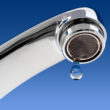WATER SUPPLY/ Computerized irrigation helps conserve water
In South Orange County, Calif., two homeowners associations are taking advantage of computerized irrigation systems to conserve water and reduce their utility bills. The switch from manually controlled irrigation was recommended by the Municipal Water District of Orange County (MWDOC), which estimated that the associations could save millions of gallons of water and thousands of dollars over a five-year period.
The project started in 1999, when associations for two Laguna Niguel communities approached the Moulton Niguel Water District (one of 27 member agencies in the MWDOC), looking for ways to reduce their water bills. The MWDOC manages several water-use efficiency programs with local water districts, and, working with Moulton Niguel, it devised a plan under which the associations could reduce water use by automating their irrigation systems.
The retrofit, which was completed last fall, affected 160 acres in one community and 105 acres in the other. It consisted of two parts: replacing manual irrigation controllers with devices that could communicate with a centralized computer system; and upgrading existing association computers with scheduling software.
One of the communities installed 52 new controllers, while the other installed five. In each case, the system determines the amount of water needed in an area by incorporating programmable information, including local weather conditions; the types of plants used in the landscape; the soil type; slopes; and the configuration of sprinklers and other irrigation devices. By using just the right amount of water, the system eliminates water waste and reduces bills.
The Laguna Niguel homeowners associations invested a combined $414,000 in their retrofit projects. In addition to lowering their bills through reduced usage, the communities also stand to gain up to $74,000 in rebates through a five-year, performance-based agreement with MWDOC, the Moulton Niguel Water District and the Metropolitan Water District of Southern California. With savings and rebates, the associations will recoup their costs in two-and-a-half to five years, according to MWDOC.



















